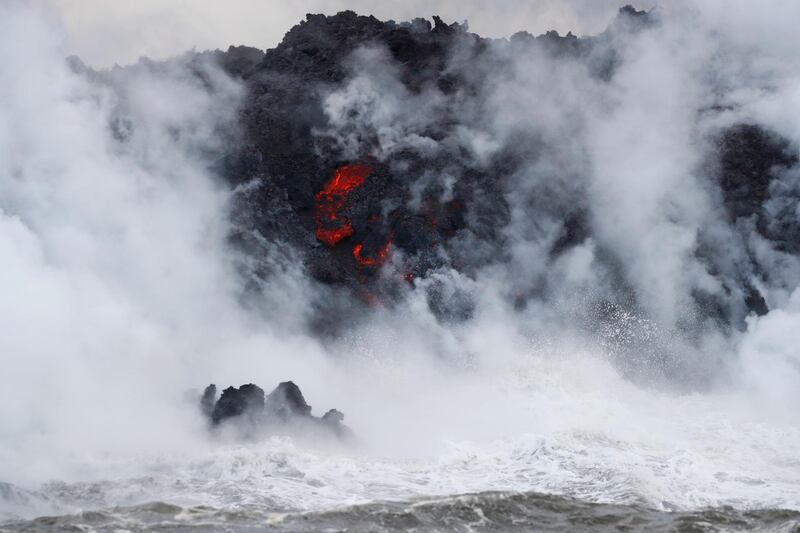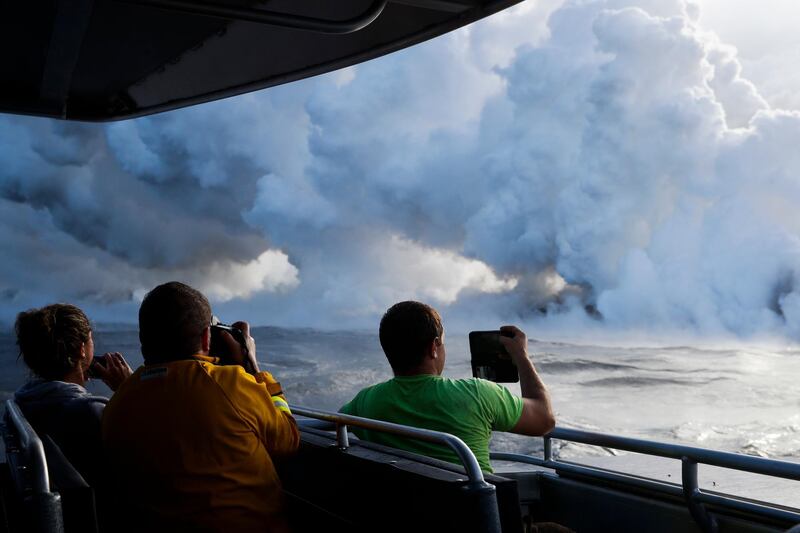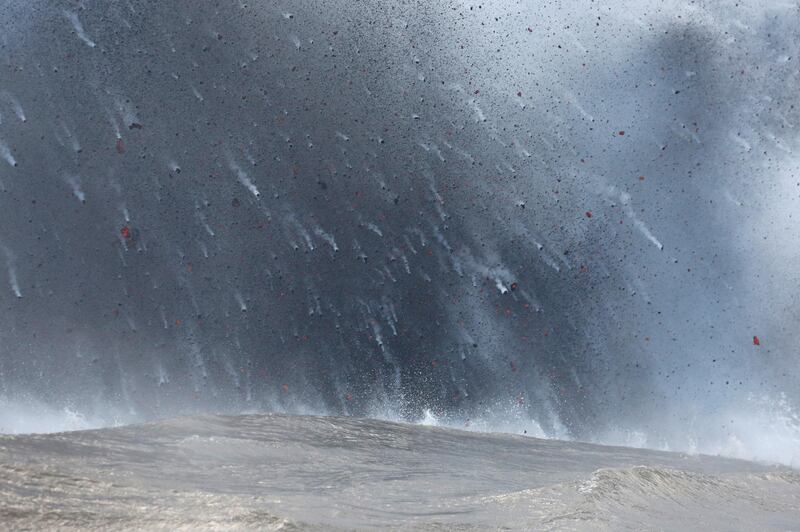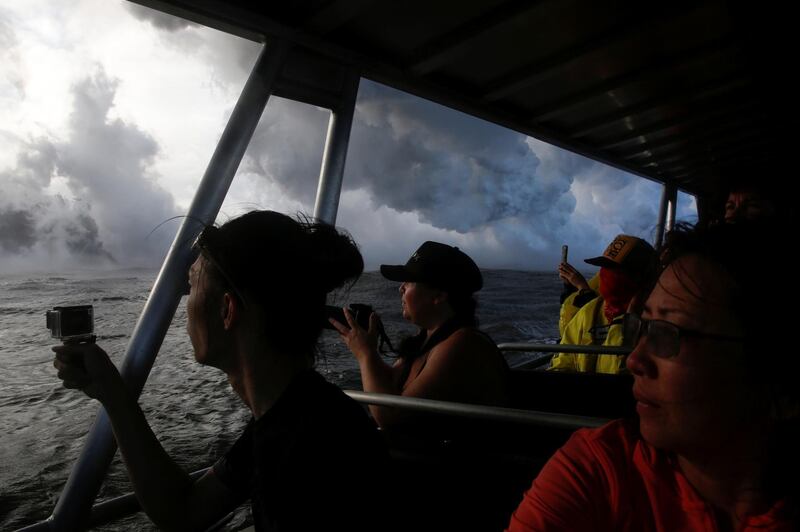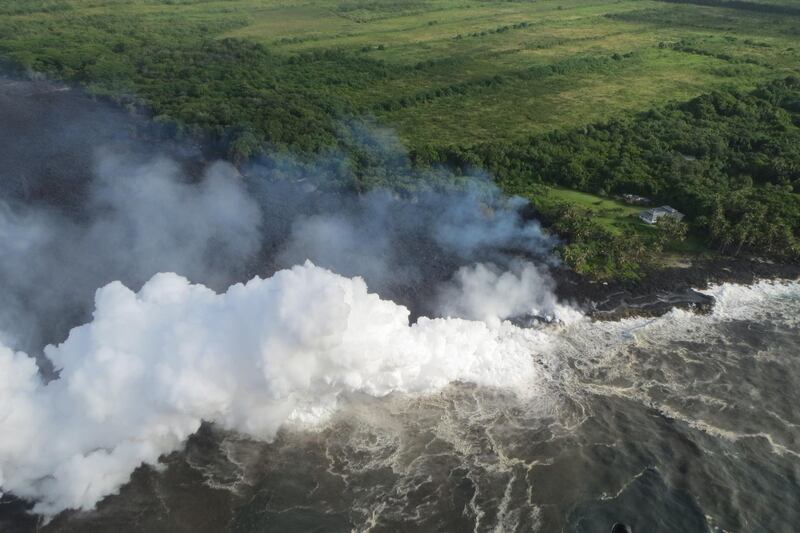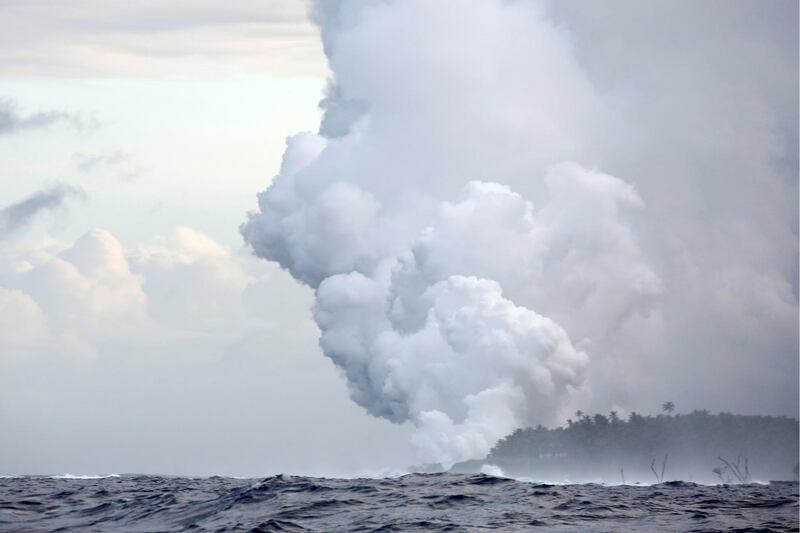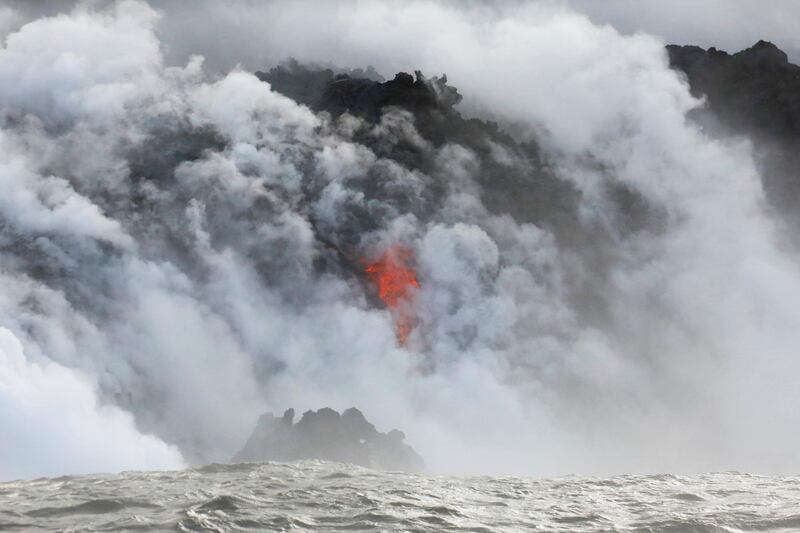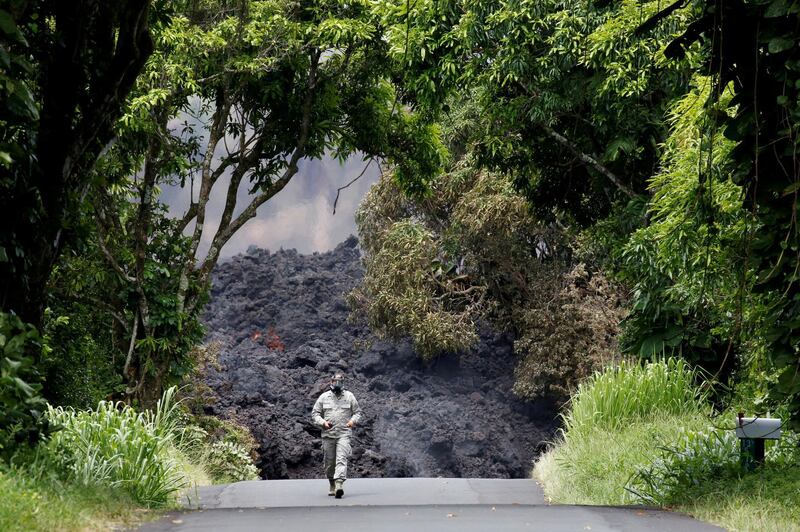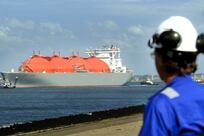With lava spewing into the air and destroying neighbourhoods, the volcanic activity on the Big Island of Hawaii offers dramatic images that could easily have been taken from a disaster movie.
Since the Kilauea volcano began erupting at the beginning of this month, there have been more than 2,000 earthquakes on or near the Big Island, the destruction of dozens of the homes and the hurling of ash thousands of feet into the air.
As have emerged in recent days, lava is now flowing into the ocean, creating a potentially fatal toxic plume known as a laze (a combination of lava and haze), made up of hydrochloric acid, steam and pieces of glass.
When the lava, which has a temperature of between 1,100C and 1,150C, hits the seawater, which is rapidly heated from 25C to more than 500C, it freezes extremely quickly, causing it to shatter and to send glass shards into the sky. Glass is usually made by heating sand and other ingredients.
At the same time, lava has been spewing out of fissures into residential areas as far as 25 miles from the volcano’s summit, engulfing cars and houses and leaving a trail of destruction in formerly tree-covered areas.
While a vivid demonstration of nature’s power, the volcanic activity is far from unexpected: Kilauea has a long history of trouble making. Nonetheless, recent events represent, said University of Oxford volcanologist Professor David Pyle, “one of the longer-lasting eruptions of Kilauea we’ve observed in the last 200 years”.
“It’s a fascinating thing to watch,” he said.
He said Kilauea’s current behaviour is typical for the volcano: magma, drawn away from the summit by subterranean fractures, is spilling out of the ground as lava, while ash is ejected from the summit crater.
“It’s creating a quickly changing set of activities within the realms of what’s been observed in the past,” said Prof Pyle.
While current events are cause enough for concern, geologists are worried by the possibility that things could take an even more serious turn. The fall in lava level in the main crater, caused by the material flowing out in other areas, could result in groundwater intrusion. This would create steam that, if it builds up beneath rocks that fall into the lava lake in the crater, could be released in an explosion sending rocks miles around.
“That’s the big concern. That could be very hazardous,” said Professor Katharine Cashman, an American volcanologist who, over more than 15 years, spent much time in Hawaii studying the volcanoes.
______________
Read more:
[ In pictures: Dramatic images show lava flowing into Pacific Ocean ]
Hawaiians putting themselves at risk by ignoring evacuation order
______________
Even if such an explosion at Kilauea were to take place, it is thought highly unlikely that it would cause devastation on the scale of that created by some other volcanoes, such as Krakatoa in Indonesia, where a notorious 1883 eruption triggered tsunamis and caused tens of thousands of deaths.
The magma at Kilauea has a lower silica content, making it thinner, so when gas escapes, it results in an explosion that, while significant locally, would not be of sufficient magnitude to cause wider consequences.
Although current events are causing upheaval for residents, for volcanologists they are supplying fascinating images and data.
“It’s astonishing to see how quickly the system can change, how quickly the summit crater can go from having the lava spread out to suddenly the lava dropping 250 metres and there’s none left at the summit,” said Prof Pyle.
“These are things people have observed in the past, but we now have the capability to see in real time with cameras and satellite images.”
The question remains as to how long the current spate of activity will last. Prof Pyle said “it wouldn’t be a surprise” if it continued for several weeks.
On a broader scale, the current eruptions represent the latest twist in a 35-year period of modern-day activity by Kilauea. This could go on much longer.
“In the past, about 400 years ago, there was an episode of protracted lava flow activity for about 60 years. The end result was a large explosive eruption. There’s a whole spectrum of possibility,” said Prof Cashman, who is now based at the University of Bristol in the United Kingdom.
